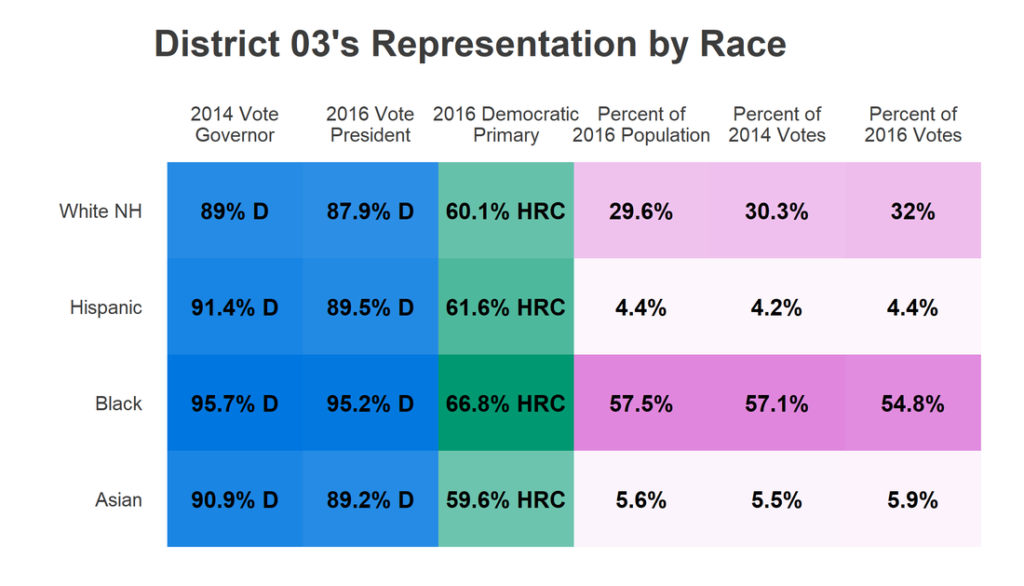This week, I’m profiling each of the State Supreme Court’s new Congressional Districts, looking at their voting behavior and their demographics. Today, the new District 03.
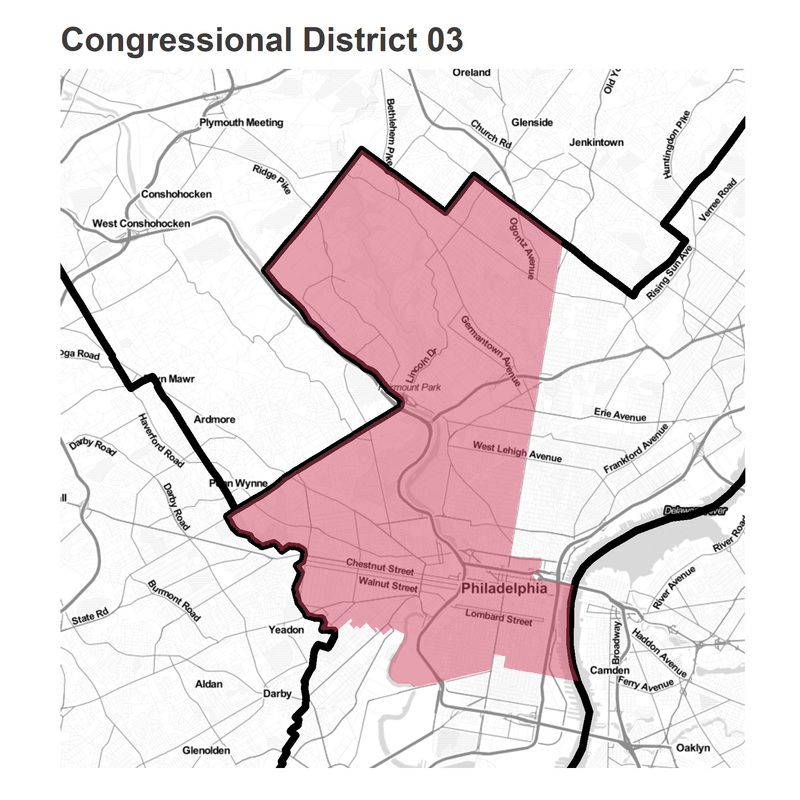
The district is the most diverse of Philadelphia’s, and perhaps of the state. It combines the affluent neighborhoods of Center City and Fairmount with West Philly, and then reaches up to Germantown, Chestnut Hill and Manayunk.
The demographic hodge podge of neighborhoods has one thing in common: all are Democratic strongholds. District 3 becomes the most Democratic in the state, and would have been won by Clinton in 2016 by 92-8 (yesterday’s District 02 would have been second, at 75-25). It isn’t just liberal, but also a Party district: Hillary beat Bernie by 64-36, also the largest margin in the state).
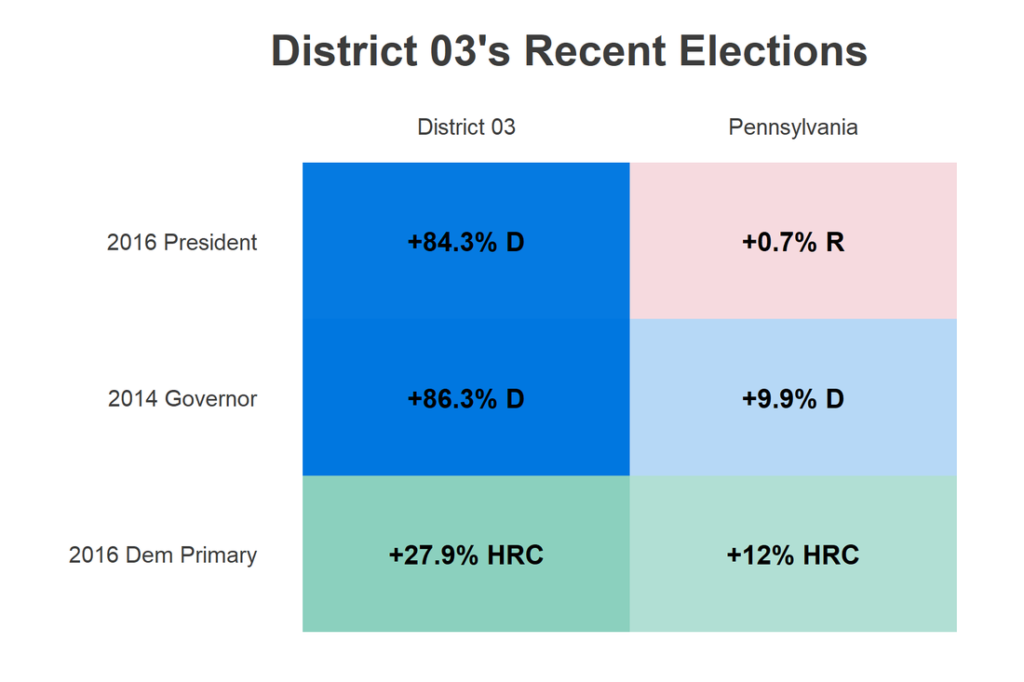
The only neighborhoods in which Clinton didn’t beat Trump by more than 50 points were Manayunk and the northern parts of South Philly; middle income predominately White neighborhoods that share traits with Trump’s base nationwide.
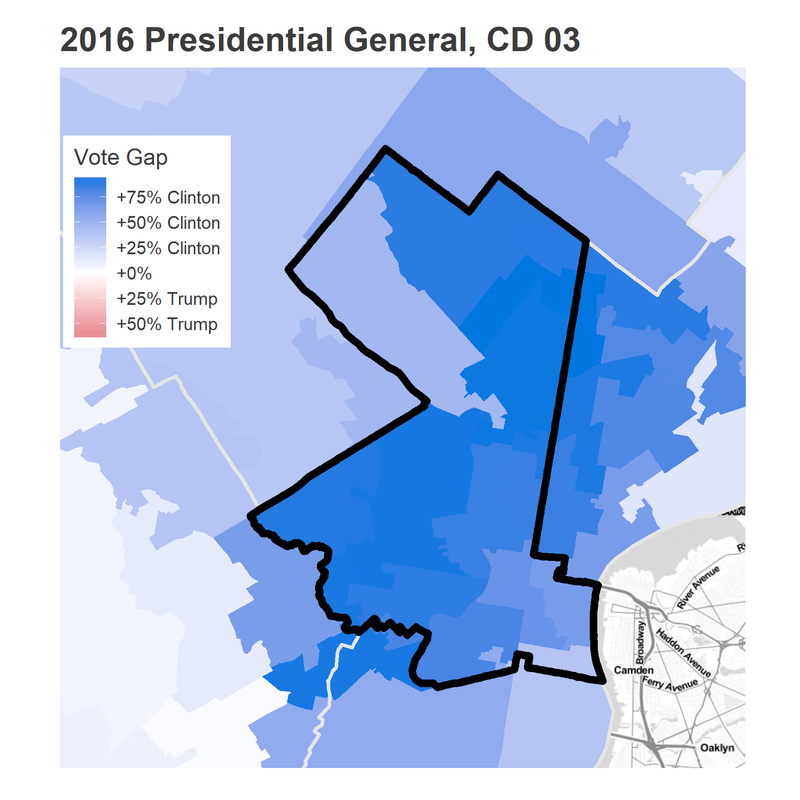
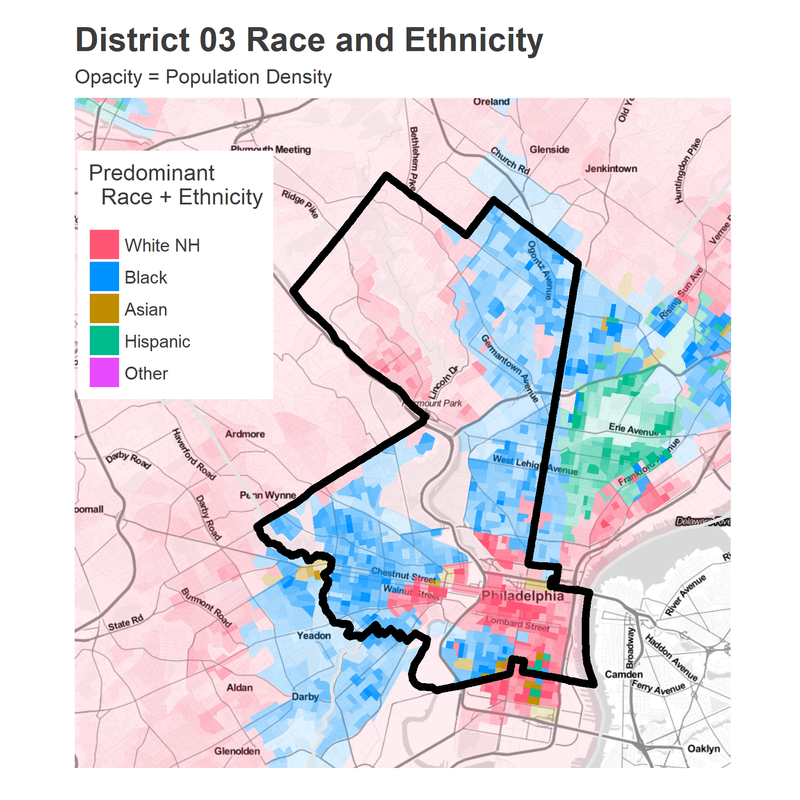
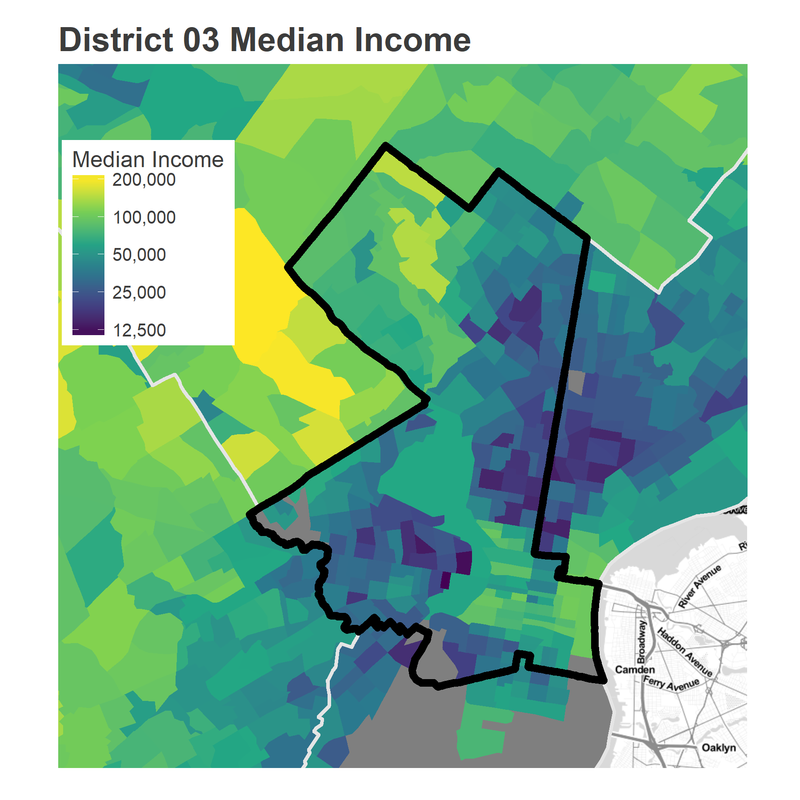
The votes are not evenly distributed with the population. Interestingly, the Black neighborhoods in Southwest Philly, Overbrook, and North Philly turned out strong in 2016, voting in numbers similar to their wealthier counterparts in Center City.
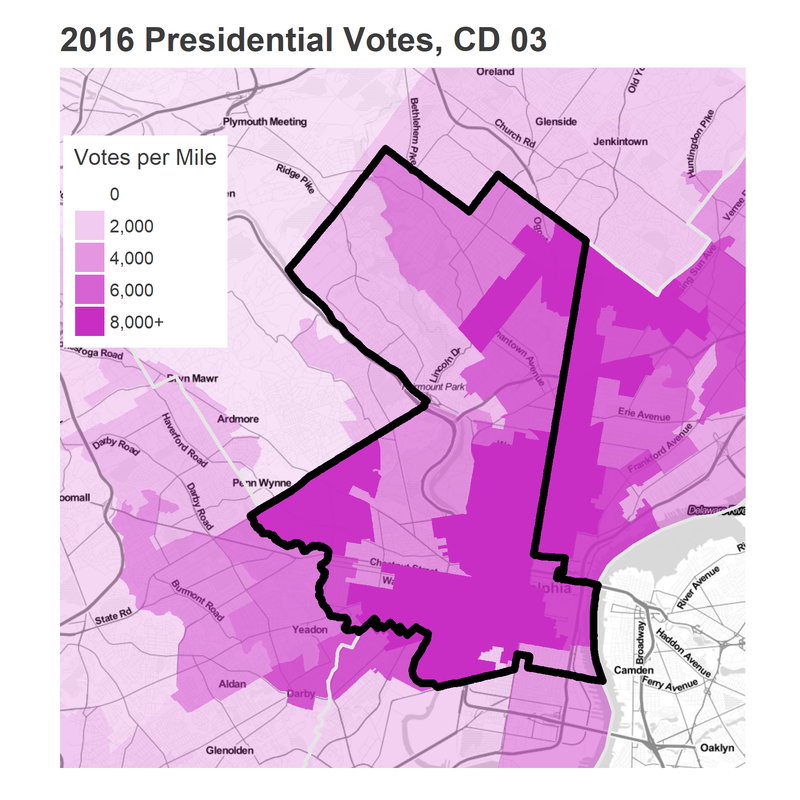
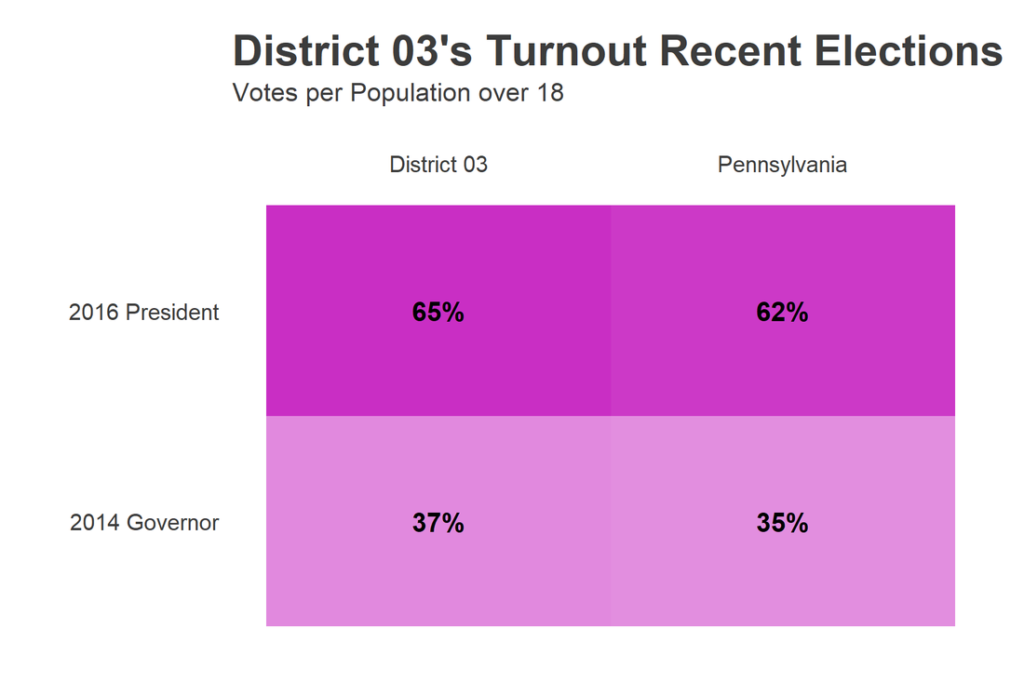
Those neighborhoods also fall off less between Presidential and Gubernatorial elections. The neighborhoods that vote for the President but don’t for the Governor are the young, new-to-the-city neighborhoods: University City, Manayunk, and Penn’s Landing/Northern Liberties. Chestnut Hill, Mount Airy, and Cedarbrook by far do the best in maintaining their voting through Gubernatorial years.
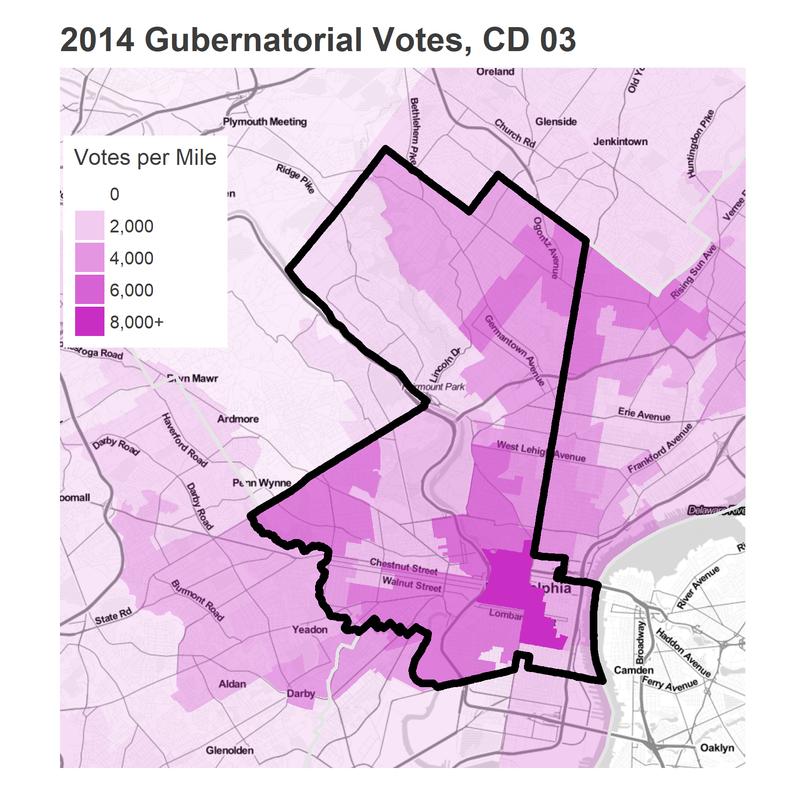
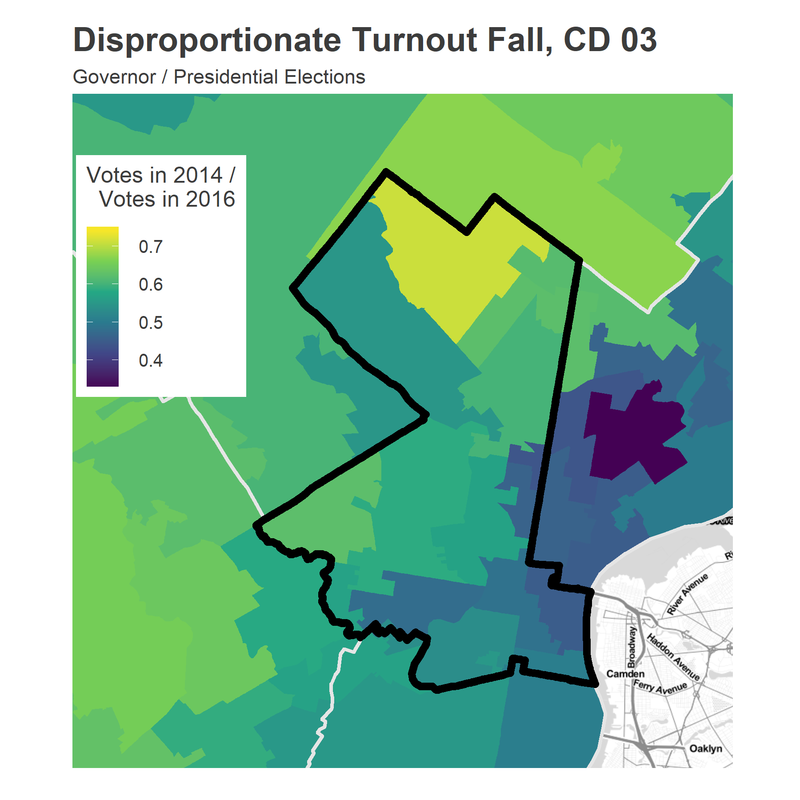
The diversity of the district played out in the 2016 primary. Manayunk, Queens Village, and University City all voted for Hillary. There’s a clear racial divide, though not a complete one: all of the Black neighborhoods voted strongly for Hillary, while the White neighborhoods appear to be split, with gentrifying White neighborhoods swinging towards Bernie (thought Hillary still eked those out) and wealthier, longer-White neighborhoods voting decisively for Clinton.
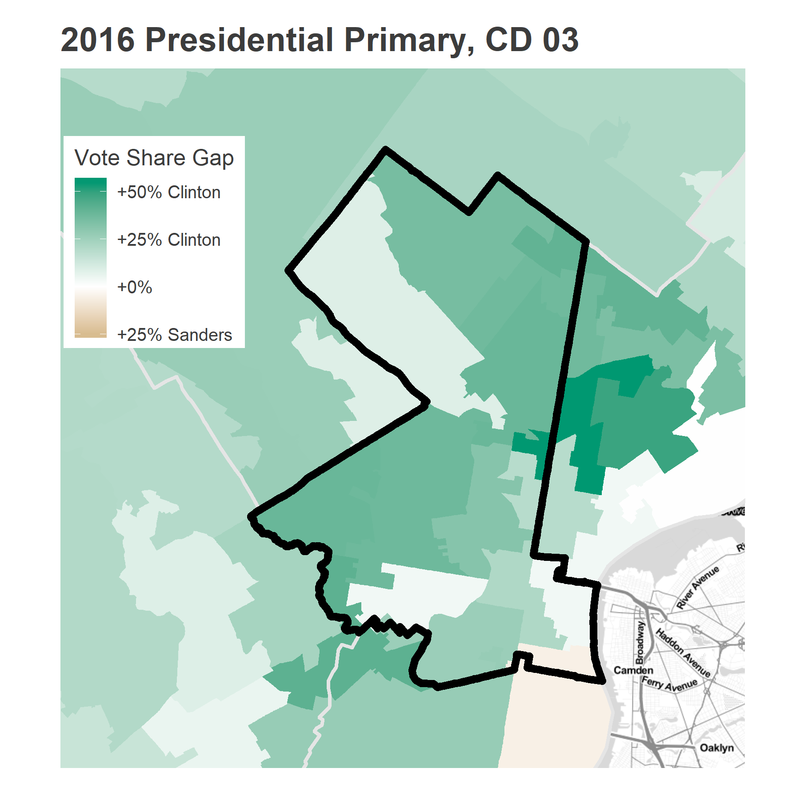
Black residents are the majority of the residents of the district, and they are a similar majority of the voters. They vote the most Democratic (though everyone in the neighborhood votes D at over 87%), and supported Hillary strongly over Bernie. White, non-Hispanic residents are disproportionately more likely to vote, and thus make up more of the electorate than they do of the population, though that’s mostly true in Presidential elections, when the younger neighborhoods turn out.
